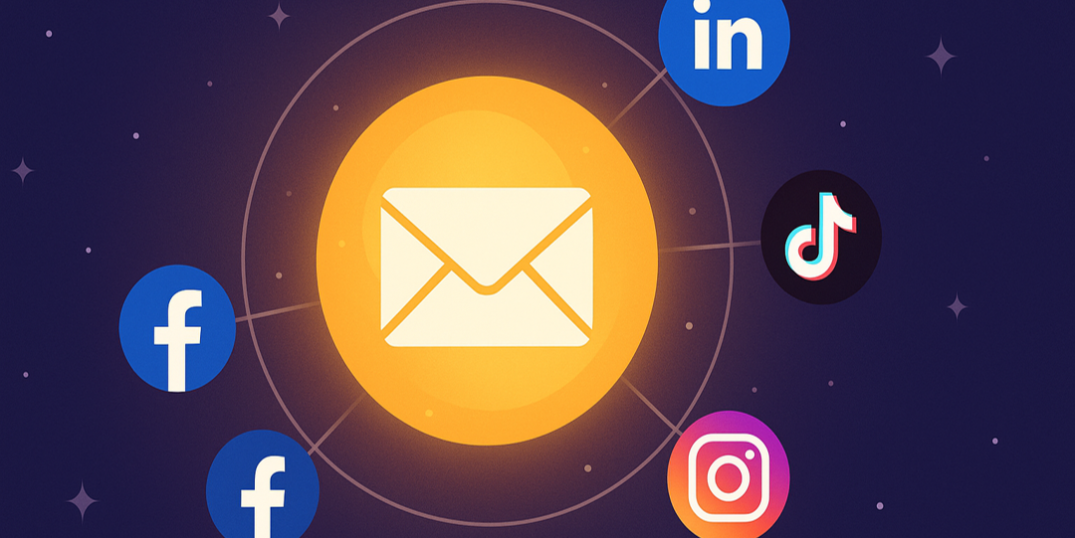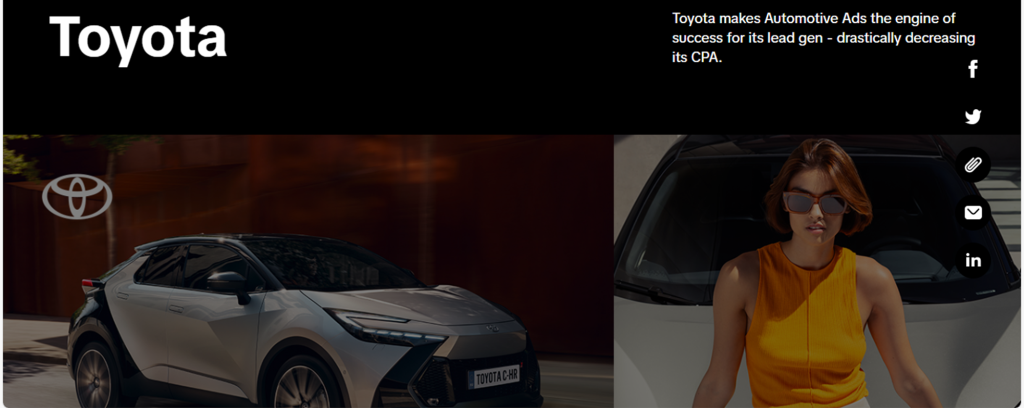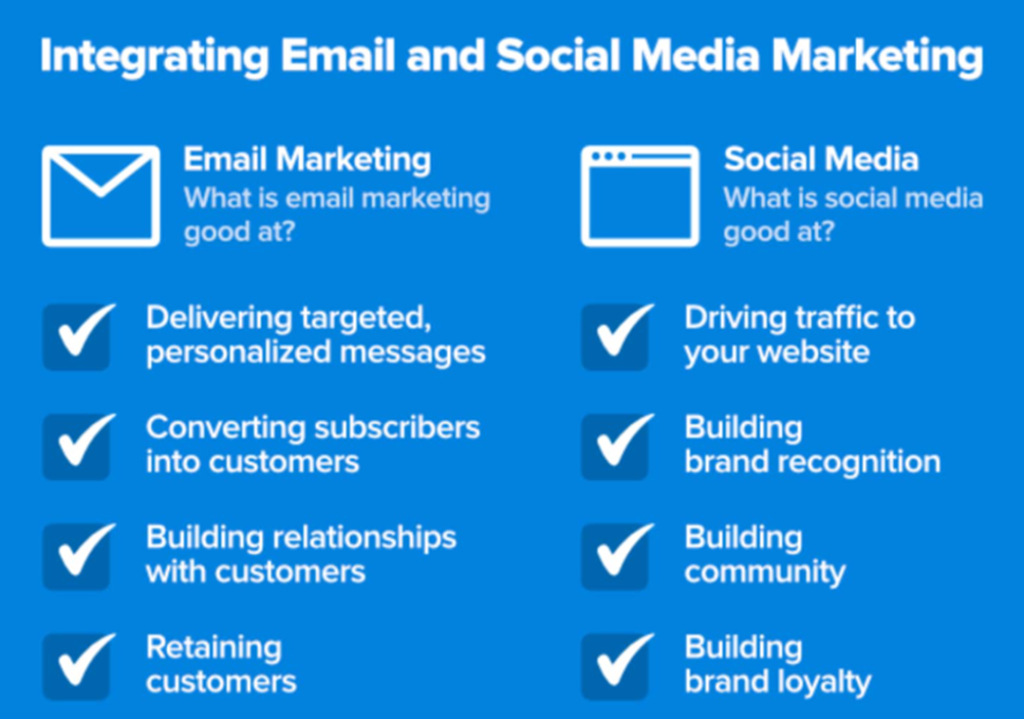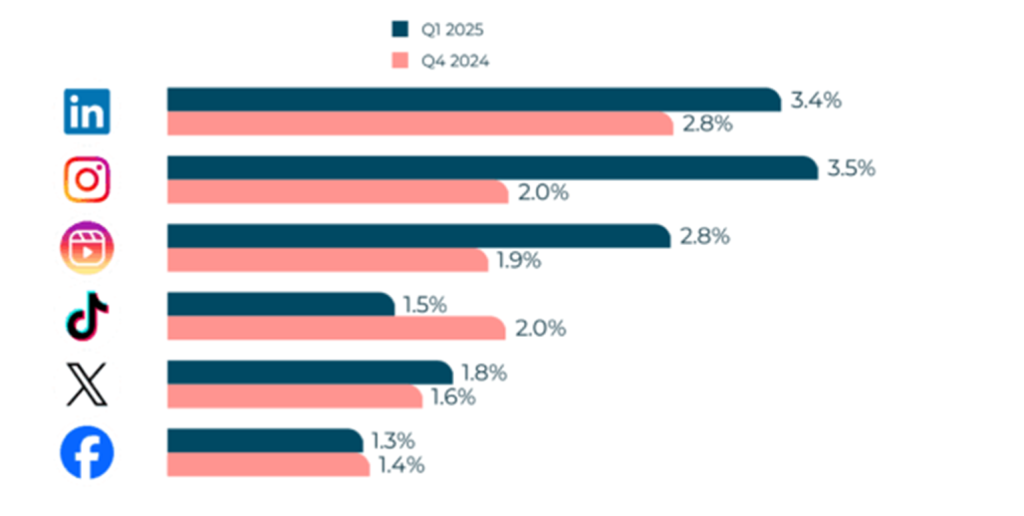- Home
- Science-Backed Marketing Insights
- How Email Marketing Compares t ...

Knowing where to invest your marketing efforts can make or break your campaigns. This digital omnichannel guide, dedicated to comparing email marketing to Facebook, Instagram, TikTok, and LinkedIn as the most powerful social media, digs into the essential statistical indicators, such as: attention dynamics, engagement benchmarks, platform strengths, channel cohesion.
Whether it’s email marketing vs. Facebook marketing, Instagram vs. email marketing, TikTok marketing vs. email campaigns, or, finally, LinkedIn vs. email for B2B marketing, it is always tempting to choose the right channel. Especially knowing that all these social media platforms are trendy, when good old email marketing seems a bit outdated. To present you the fullest and most objective picture, we have prepared this research based on the freshest data and insights as of 2025.
Email vs. Social Media: The Psychology of Attention
Psychology rules, period. And digital marketing is no exception. Obviously, when you compare email vs. social media, they reveal very different behavioral patterns and psychological profiles of users. Let’s now get the insight into each channel.
- Typically, email communication is a task-based medium, prompting deliberate reading and purposeful action. For example, here’s the subject line that showcases it: “Hey John, take a look at what we’ve got for you for Christmas!”
- Essentially, email content, like webpages, follows a so-called Z-pattern reading flow, encouraging a type of engagement known as reflective reading. This means that people read emails more intentionally. They scan headlines, images, and call-to-action buttons in a logical, structured way. This appears to be a great benefit for you as a digital marketer!
- Unlike social media, where you scroll endlessly, email encourages slower, more focused reading, which is ideal for thoughtful digital marketing content, such as product information, offers, or storytelling.
- Finally, email communication is not gamified, unlike some social media. Additionally, it is less susceptible to the so-called dopamine-driven scrolling behavior, as seen on platforms like Instagram, TikTok, and other social media.
⭐ Social media
Now, it is social media time. Let’s look at this side’s profile:
- One of social media’s most significant features is feed-based browsing, which leads to short, fragmented sessions. This is why Instagram, for instance, was never intended to be a platform for long-read content.
- Another important issue is that platforms like Instagram and TikTok are built around so-called variable rewards, such as views, likes, and comments, which differ significantly from email marketing.
- Attention spans are shrinking, too. For example, Gen Z averages just 8 seconds! You can compare it to 12 seconds for Millennials, according to a review by the CakeCommerce blog article. Anyway, people on social media look through the content. This, in turn, means that such content must be specific and distinct from what the recipient can obtain from a carefully crafted email.
- According to this research, short-form video consumption like TikTok is linked to declines in sustained attention and memory retention. And, by the way, its impact on our cognitive functions is yet to be thoroughly studied.
⭐ Average dwell times
In this section, we compare email and social media in terms of dwell times, or the period that users spend on each email or social media post.
- Email: Users’ average dwell time has recently decreased from 13 to 9 seconds per email, according to the Litmus research.
- On the other hand, TikTok/Instagram sessions average around 1 hour and 16 minutes daily, or approximately 55 minutes per session, according to Firework statistics. The most important point is that dwell time is largely based on watching short-form videos, which account for up to 90 percent of internet traffic, as stated in the above-mentioned research. So, the current trend is: the shorter, the better!
Email vs. Social Media Engagement: Data-Backed Benchmarks
Let’s now look at the stats regarding email vs. social media performance based on the key metrics. The sources for email stats are the “What are good open and click-through rates for email campaigns?” and “15 Email Marketing Best Practices to Build a Killer List” articles that we found very useful for this research, while we relied on the Hootsuite data for social platforms.
Average Engagement Rate
Our conclusion: Based on this data, you can see that email still remains the most efficient channel for direct responses and conversions. On the other hand, social platforms show better results in awareness and fleeting engagement. So, the key outcome is that you must plan online marketing campaigns very carefully, choosing the right channel to achieve your goals.
When to use what
Knowing when to use what is the key to your success as a digital marketer. So, let’s develop a road map:
💎 Conversions
✅ Email is a clear winner in conversions—it offers higher intent, direct CTAs, and measurable— and high—ROI, which is around 36%, according to multiple sources.
✅ On the other hand, social platforms offer a smaller ROI, depending on the media. For example, according to this research, Instagram has 25%, Facebook has about 23%, TikTok’ ROI is 12%, with LinkedIn trailing one point behind at 11%. However, TikTok and Instagram are ideal for top-funnel awareness.
💎 Awareness & reach
✅ TikTok and Instagram dominate short-video reach these days, according to the stats released in the “40+ Short Form Video Statistics: The Jaw-Dropping Numbers You Must Know in 2024” research.
✅ On the other hand, Facebook’s organic reach declines—but niche groups still thrive, so pay attention to pick the right community!
💎 B2B/lead generation
✅ It seems that the LinkedIn + email combo can be ideal for promoting white papers, webinars, and nurturing campaigns.
💎 Gen Z
✅ Gen Z is best reached via TikTok and Reels, as these are the platforms they spend most of their time on.
✅ However, email communication can still work if it is mobile-optimized and includes various hooks inside content.
💎 Platform usage stats
✅ First, out of 5.3 billion internet users globally, 4.37 billion are email users vs. 4.95 billion with social accounts, according to the 2025 article “Email Marketing vs. Social Media: Is There a Clear Winner?”
✅ Another cool fact is that 99% of users check emails daily, with Millennials and Gen Z both making up around 60% who check in the mornings, according to the same source.
Personalization & targeting
Let’s look at the strong sides for each channel here:
| Platform | Key Features |
|---|---|
| Full segmentation power, behavior-based triggers, automation control | |
| Facebook/Instagram | Pixel-based retargeting, similar audiences, limited organic visibility |
| TikTok | Interest graph-based discovery, less control, trend-driven |
| Premium targeting via job titles and industries, expensive CPMs |
Combining Platforms: Funnel Strategy
Consider the following digital marketing schemes as possibilities:
| Platform Combination | Funnel Strategy |
|---|---|
| TikTok → Email | Capture leads via content or UGC, then send video follow-ups |
| LinkedIn → Webinar | Promote your campaign to a B2B audience, then funnel leads into email sequences to strengthen the impact |
| Instagram Stories → Freebie | Use various CTAs to drive sign-ups to your email list |
| Facebook Groups → Drip Campaigns | Nurture leads and then upsell via email |
Case Snippet
Let’s see a real-life example, which is TikTok for Business and Toyota cooperation:
Toyota decided to integrate its automotive-specific ad formats with a highly engaged audience. This lead generation strategy resulted in a 38% average reduction in cost per acquisition (CPA) compared to their standard lead generation approach. For example, the Corolla CPA alone achieved an amazing 65%! The result is a clear demonstration of TikTok funnel effectiveness. And this is how it works.

Platform Strength Matrix
Finally, the best time has come to develop a matrix to finalize our research. We have listed advantages, risks, and tips for each channel.
| Platform | Best for | Key risk | Tip |
| Conversions, nurturing, and automation | Open rates affected by privacy | Optimize mobile and personalize deeply | |
| Community building, niches | Organic reach decline | Leverage groups plus paid boosts | |
| Brand visuals and top-funnel awareness | Algorithm volatility | Use Reels and shoppable posts | |
| TikTok | Gen Z discovery and chance to go viral | Short attention spans | Create strong hooks in the initial three seconds |
| B2B, lead gen, and webinars | High CPC, niche reach | Promote gated content via ads |
To Sum Up
The first thing you should know: email remains the cornerstone of conversions as a channel. As we discovered, it still offers unmatched intent and ROI. However, there is still the issue of email open rates versus social media engagement. On the other hand, despite social media like Instagram and TikTok dominate awareness and engagement, their impact is rather short-lived. And LinkedIn, in its turn, excels for professional lead generation.
As you may recall, we began this article by posing a couple of significant questions. Now, it is time to ask another one: What could be the optimal strategy? Based on this research, the short answer is to use social media to attract, then email to convert and nurture. It’s like in golf, where you select different clubs for different tasks and combine them.
Your email list is your stronghold and will remain so. Social media is your chance to address a broader audience, with a chance to go viral.
In real-life scenarios, this still means that your omnichannel digital strategy must be some nice marketing brew with the right ingredients mixed properly and added when needed into the bowl. Simply put, you just can’t afford to take only one channel and expect an effective and comprehensive digital campaign. So, if you are wondering what the best marketing channel for conversions is, the answer is email.
Here are a few tips to help you get the most out of both email and social media. First, audit your current performance metrics for existing channels to understand where you are. Then, you could run tests, like plan a TikTok campaign leading to your gated email content. Always optimize your emails for mobile users and don’t forget about personalization—it is a must-have. Finally, you may align your posting frequency and creative to each platform, based on the benchmarks above.
P.S. We strongly recommend that you study this Sendigram article for a better understanding of email vs. social media and maximizing your marketing impact. This would be your ultimate step to planning effective omnichannel digital campaigns.





